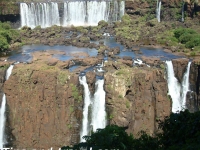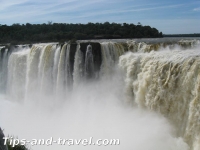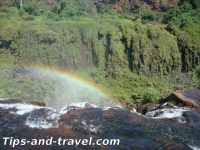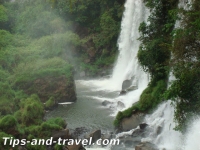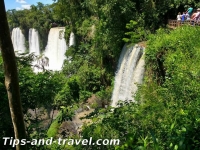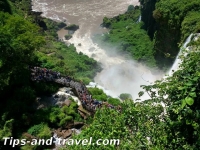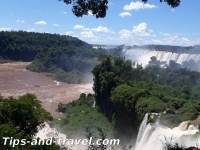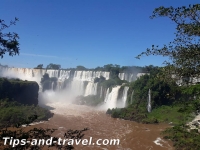The Iguazú Falls, located in the middle of the rainforest, on the border between Argentina and Brazil, very close to the junction with Paraguay, is a UNESCO World Heritage natural wonder. In Guaraní, Iguazú means ‘great waters’. They are 17km north of Port Iguazú and 1350km from Buenos Aires. There is a national park on the Argentine side and another park on the Brazilian side. It is a set of 275 waterfalls of about 3 km, the best known is ‘The Garganta del diablo’ (Devil’s Throat) which is U-shaped and 700 meters long, 150m wide and 82 m high. The set of cascades pours up to 6 million liters of water per second. The majority of the falls are on the Argentine side and there are several tours that allow us to approach up to a few meters from the falls. The circuits were built in the middle of the forest and below the branches of the river (Paranà river whose Iguazú river is a tributary). A train takes you to different points of visit. In the parks there are over 2000 floral species, 400 bird species, and a wide variety of mammals, reptiles and insects. Many filmmakers from around the world have chosen this wonderful place to shoot their films.
Tips
It is a great place to visit in a long weekend but if you can not take several days, at least dedicated 2 full days to the falls to have the opportunity to visit both sides, it’s worth it! The bigger park is in Argentina since the falls are almost all in Argentina but the vision you can have of the whole Brazilian side is simply breathtaking.
Do not miss the boat trip to get even closer to the falls. Of course you are going to get wet but it is a beautiful feeling and the sound of the falls is sometimes deafening. You will not regret for a second this experience.
If you are allergic to insects, wear a long-sleeved shirt and pants but a cool fabric because it is almost always warm and it is quite humid. It’s best to wear sport shoes to better walk the circuits and not to slide in wet places.
It is not recommended to feed the animals. One of them; the coati, who is quite accustomed to the tourist and always approaches knowing that people always tend to give them something. Try not to change their natural habitat.









